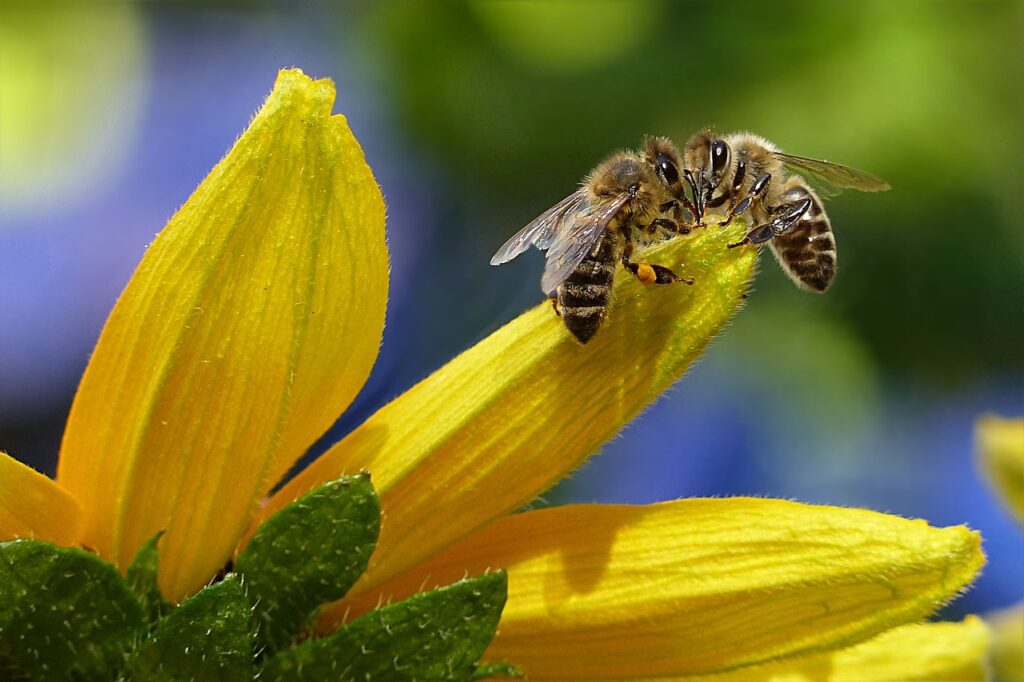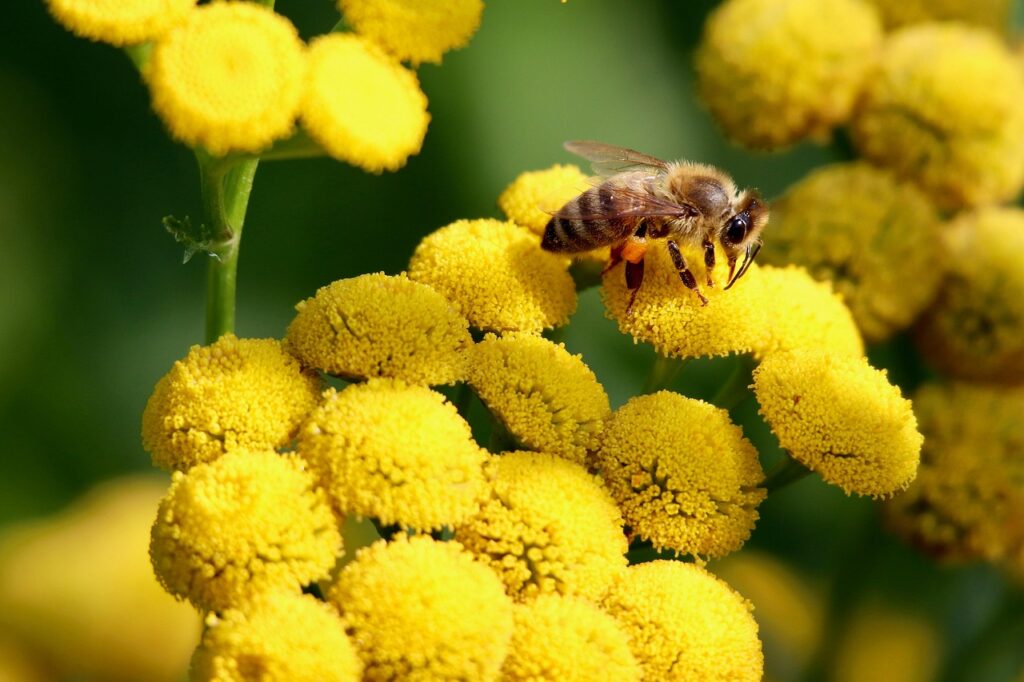Photo by https://extension.psu.edu/yellow-legged-hornet
The Yellow-Legged Asian Hornet (Vespa velutina), commonly abbreviated as YLH (not YLAH), represents a significant emerging threat to the United States, particularly to the beekeeping industry and agricultural systems dependent on pollinators.
While not yet established nationwide, its presence in the southeastern United States since 2023 marks a critical juncture in invasive species management.
Current Status in the United States
The yellow-legged hornet was first detected in the United States in August 2023 near Savannah, Georgia, representing the first confirmed live specimen in the open United States[1][2][3].
Subsequently, the species has been identified in South Carolina, with detections occurring in Jasper and Beaufort Counties[4][5][6]. As of 2025, eradication efforts have intensified across both states, with authorities working to prevent establishment before the species can spread further[5][7][8].
Detection and Spread Timeline
Since the initial Georgia detection, the invasion has shown concerning expansion patterns.
By 2024, yellow-legged hornets had been found in four Georgia counties: Effingham, Chatham, Bryan, and Liberty, covering approximately 350 square miles[5]. In South Carolina, the species has colonized an estimated 100+ square miles around Hilton Head Island[5].
Georgia authorities have destroyed multiple nests since 2023, with 50 additional colonies located and destroyed in both states during 2024[5][9].
The with Georgia reporting the successful eradication of four embryo nests in the Savannah area as of April 2025[8].
However, the detection of overwintered queens suggests the species may have successfully established breeding populations[5][7].
Threat Assessment
Primary Threats to Agriculture and Beekeeping
The yellow-legged hornet poses multifaceted threats to American agriculture, with beekeeping bearing the primary impact.
The species is a voracious predator of honeybees, capable of devastating entire colonies through both direct predation and behavioral disruption[1][3][10].
Beekeeping Industry Impact:
- Individual hornets can kill dozens of honeybees daily[10]
- Hornets employ “hawking behavior,” hovering at hive entrances to capture returning foragers[3][6]
- Colony intimidation prevents normal foraging activities, leading to weakened hives[2][3]
- European studies indicate colony losses between 18-50% in invaded areas[11]
- Economic modeling suggests potential losses of 26.6% of honey revenues for affected beekeepers[12][13]
Agricultural Pollination Services:
The broader agricultural impact extends beyond honey production to crop pollination services.
Honeybees contribute approximately $15 billion annually to crop values through pollination[14].
Key crops at risk include almonds, cherries, oranges, apples, melons, cranberries, pumpkins, squash, broccoli, and other fruits requiring bee pollination[14].
Human Health Considerations
While the yellow-legged hornet poses minimal direct health risks to humans compared to other stinging insects, it can deliver multiple stings with potent venom[2][3].
The species is generally less aggressive toward humans than native hornets unless defending its nest[3].
In its native range in China, all wasp species combined account for approximately 27 deaths annually per province, indicating relatively low human mortality risk[2].
Climate Suitability and Establishment Risk
Environmental Compatibility
Climate modeling studies indicate that large portions of the United States possess suitable habitat for yellow-legged hornet establishment[15][11][16].
The species demonstrates remarkable adaptability to temperate climates, having successfully invaded most of Europe, South Korea, and Japan since its initial spread from Southeast Asia[17][18][19].
Climate Factors Favoring Establishment:
- Temperate regions with moderate seasonality
- Areas with adequate precipitation during breeding seasons
- Regions with suitable overwintering conditions for queens
- Proximity to agricultural landscapes providing diverse prey insects[11][20]
Invasion Potential
The yellow-legged hornet exhibits characteristics that facilitate successful biological invasions[18][21].
Key factors contributing to invasion success include:
- High reproductive potential: Colonies can house up to 6,000 workers[2][22]
- Adaptive foraging behavior: Capable of exploiting diverse insect prey
- Human-mediated dispersal: Transportation through trade and travel corridors
- Limited natural enemies: Absence of co-evolved predators and parasites in invaded regions
Economic Impact Assessment
Direct Economic Costs
European case studies provide insight into potential economic impacts in the United States.
In France, nest destruction alone cost €23 million between 2006-2015, with annual costs potentially reaching €11.9 million as the species expands[23][24].
Economic modeling suggests that €30.8 million annually could be lost due to colony mortality in France alone[12][13].
Projected U.S. Economic Impacts:
- Beekeeping industry losses through colony mortality and reduced productivity
- Increased management costs for trap deployment and monitoring
- Agricultural yield reductions due to decreased pollination services
- Government expenditure on surveillance and eradication programs
Indirect Economic Effects
Beyond direct beekeeping losses, yellow-legged hornet establishment could trigger cascading economic effects throughout agricultural supply chains[25][26].
Reduced pollinator services would particularly impact specialty crop production in the southeastern United States, where Georgia’s agriculture industry represents the state’s largest economic sector[22].
Control and Management Efforts
Current Eradication Programs
State and federal agencies have implemented intensive surveillance and eradication programs in Georgia and South Carolina[27][22][28].
These efforts involve:
- Trap deployment: Over 1,000 survey traps deployed across six Georgia counties[27]
- Nest location and destruction: Systematic searches for embryo, primary, and secondary nests
- Public reporting systems: Online platforms for citizen reporting of suspected hornets
- Interagency coordination: Collaboration between USDA APHIS, state departments of agriculture, and university researchers
Management Challenges
Several factors complicate eradication efforts:
- Cryptic behavior: Early-season queens are difficult to detect
- Rapid reproduction: Single queens can establish colonies producing hundreds of new queens
- Dispersal capability: Queens can fly 30-45 miles during dispersal[5]
- Look-alike species: Confusion with native hornets hampers accurate reporting
- Resource requirements: Intensive surveillance demands significant personnel and financial resources
Future Risk Scenarios
Establishment vs. Eradication
The yellow-legged hornet represents a critical window for prevention in the United States. Current limited distribution provides opportunity for successful eradication if sustained control efforts continue[5][7][8].
However, failure to contain the species could result in rapid expansion throughout climatically suitable regions.
Success Factors for Eradication:
- Early detection of all overwintering queens
- Comprehensive nest destruction before reproductive season
- Sustained public engagement in reporting programs
- Adequate funding for multi-year control efforts
Establishment Consequences:
- Permanent ecological disruption to native pollinator communities
- Chronic economic losses to beekeeping and agriculture
- Expansion throughout the southeastern and potentially mid-Atlantic states
- Integration into existing ecosystems as permanent invasive species
Conclusion
The yellow-legged hornet constitutes a serious and immediate threat to United States agriculture and beekeeping.
While currently confined to limited areas in Georgia and South Carolina, the species possesses characteristics enabling rapid expansion if control efforts prove insufficient.
The economic stakes are substantial, with potential losses extending far beyond direct beekeeping impacts to broader agricultural systems dependent on pollination services.
Critical action items include:
- Maintaining intensive surveillance and eradication programs
- Expanding public awareness and reporting systems
- Securing sustained funding for multi-year control efforts
- Developing rapid response protocols for new detections
- Coordinating interstate management strategies
The next 2-3 years represent a decisive period for determining whether the yellow-legged hornet becomes permanently established in North America or remains a successfully managed invasive species threat. Swift, coordinated action across multiple jurisdictions offers the best prospect for protecting American agriculture from this formidable invasive pest.
⁂
- https://beeculture.com/yellow-legged-hornet-in-north-america/
- https://bees.caes.uga.edu/bees-beekeeping-pollination/yellow-legged-hornet.html
- https://newswire.caes.uga.edu/story/10271/yellow-legged-hornet.html
- https://www.ncagr.gov/news/press-releases/2024/05/09/yellow-legged-hornet-new-invasive-pest-watch-after-its-been-found-sc
- https://beeculture.com/update-on-the-yellow-legged-hornet/
- https://news.clemson.edu/clemson-officials-find-destroy-yellow-legged-hornet-nests-in-beaufort-county/
- https://www.ncipmc.org/yellow-legged-hornet-pest-alert-supports-georgia-eradication-efforts/
- https://agr.georgia.gov/pr/georgia-department-agriculture-eradicates-multiple-yellow-legged-hornet-nests-renews-call
- https://fruitgrowersnews.com/news/georgia-eradicates-nest-of-bee-predator-yellow-legged-hornet/
- https://knowablemagazine.org/content/article/food-environment/2024/scientists-combat-honeybee-threat-yellow-legged-hornet-spread-us
- https://pmc.ncbi.nlm.nih.gov/articles/PMC11214857/
- https://figshare.com/articles/dataset/Data_from_Economic_costs_of_the_invasive_Yellow-legged_hornet_on_honey_bees_/22328545
- https://pubmed.ncbi.nlm.nih.gov/37467993/
- https://www.wuwf.org/2023-08-17/an-invasive-hornet-that-hunts-honeybees-is-spotted-in-the-u-s-for-the-first-time
- https://link.springer.com/10.1007/s10661-021-09406-2
- https://scijournals.onlinelibrary.wiley.com/doi/10.1002/ps.7987
- https://en.wikipedia.org/wiki/Asian_hornet
- https://www.frontiersin.org/articles/10.3389/finsc.2023.1145158/pdf
- https://www.mdpi.com/1420-3049/27/1/138/pdf
- https://pmc.ncbi.nlm.nih.gov/articles/PMC10442361
- https://pmc.ncbi.nlm.nih.gov/articles/PMC10926419/
- https://agr.georgia.gov/yellow-legged-hornet
- https://neobiota.pensoft.net/article/38550/download/pdf/
- https://neobiota.pensoft.net/article/38550/
- https://academic.oup.com/jipm/article/15/1/43/7904618
- https://www.foodlogistics.com/safety-security/pest-management/article/22874555/rollins-inc-yellowlegged-hornet-is-it-a-threat-to-agriculture
- https://www.aphis.usda.gov/news/agency-announcements/plant-protection-today-usda-supports-states-yellow-legged-hornet-hunters
- https://news.clemson.edu/clemson-launches-new-yellow-legged-hornet-reporting-system/
- https://www.clemson.edu/public/regulatory/plant-industry/invasive/invasive-spotlights.html
- https://extension.oregonstate.edu/catalog/pub/em-9297-northern-giant-hornet-potential-threat-honeybee-colonies-oregon
- https://pmc.ncbi.nlm.nih.gov/articles/PMC10339917/
- https://pmc.ncbi.nlm.nih.gov/articles/PMC5993251/
- https://www.mdpi.com/2306-7381/9/4/183/pdf
- https://dx.plos.org/10.1371/journal.pone.0198597
- https://www.hindawi.com/journals/mpe/2021/2518472/
- https://www.pctonline.com/news/georgia-department-of-agriculture-experts-urge-reporting-of-yellow-legged-horney-embryo-nests/
- https://www.e-jecoenv.org/journal/view.html?doi=10.5141%2Fjee.24.071
- https://www.ncipmc.org/communications/pest-alerts/yellow-legged-hornet/
- https://www.frontiersin.org/journals/insect-science/articles/10.3389/finsc.2023.1145158/full
- https://pmc.ncbi.nlm.nih.gov/articles/PMC10442361/
- https://pmc.ncbi.nlm.nih.gov/articles/PMC9225471/
- https://pmc.ncbi.nlm.nih.gov/articles/PMC6700122/
- https://www.mdpi.com/2075-4450/10/8/237/pdf
- https://pmc.ncbi.nlm.nih.gov/articles/PMC5614577/
- https://pmc.ncbi.nlm.nih.gov/articles/PMC8746500/
- https://neobiota.pensoft.net/article/71352/list/18/
- https://agr.wa.gov/hornets
- https://pmc.ncbi.nlm.nih.gov/articles/PMC7547231/
- https://academic.oup.com/jinsectscience/article-pdf/21/4/10/39607895/ieab052.pdf
- https://www.mdpi.com/2075-1729/14/3/283/pdf?version=1708423242
- https://onlinelibrary.wiley.com/doi/10.1002/ece3.3053
- https://pmc.ncbi.nlm.nih.gov/articles/PMC5496521/
- https://pmc.ncbi.nlm.nih.gov/articles/PMC10971230/
- https://pmc.ncbi.nlm.nih.gov/articles/PMC8351285/
- https://zenodo.org/record/3826921/files/source.pdf
- https://pmc.ncbi.nlm.nih.gov/articles/PMC4782260/
- https://invasivespecies.wa.gov/wp-content/uploads/2020/04/AsianGiantHornet-FactSheet.pdf
- https://www.cnn.com/2024/12/18/us/invasive-murder-hornets-are-wiped-out-in-the-us-officials-say
- https://extension.psu.edu/yellow-legged-hornet/
- https://news.gatech.edu/news/2024/12/19/murder-hornet-eradication-relief-us-honeybees
- https://bygl.osu.edu/node/2321
- https://www.semanticscholar.org/paper/d10d87bb15ed8c4c3d46e8d7236dafa26eb25903
- https://pmc.ncbi.nlm.nih.gov/articles/PMC10121689/
- https://www.mdpi.com/2076-2615/14/1/129/pdf?version=1703860469
- https://neobiota.pensoft.net/article/71352/download/pdf/
- https://www.tandfonline.com/doi/pdf/10.1080/23311932.2024.2313679?needAccess=true
- https://www.mdpi.com/2075-4450/14/1/6/pdf?version=1671632906
- https://pmc.ncbi.nlm.nih.gov/articles/PMC6723431/
- https://pmc.ncbi.nlm.nih.gov/articles/PMC10107170/
- https://www.advancedsciencenews.com/giant-hornet-potential-spread-and-impact-on-honeybees/
- https://resources.ipmcenters.org/view/resource.cfm?rid=42671
- https://www.usda.gov/media/blog/2020/06/22/protecting-pollinators-new-threat-first-ever-us-sightings-asian-giant-hornet
- https://www.veto-pharma.com/honey-bee-health/hornet-trapping/
- https://dx.plos.org/10.1371/journal.pone.0320769
- https://pmc.ncbi.nlm.nih.gov/articles/PMC12002430/
- https://pmc.ncbi.nlm.nih.gov/articles/PMC11906911/
- https://www.mdpi.com/2079-7737/10/5/448/pdf
- https://pmc.ncbi.nlm.nih.gov/articles/PMC7537856/
- https://pmc.ncbi.nlm.nih.gov/articles/PMC10295296/
- https://neobiota.pensoft.net/article/80359/download/pdf/
- https://peerj.com/articles/947
- https://blogs.clemson.edu/regulatory/june-2025-yellow-legged-hornet-update-critical-beekeeper-alert-report-ylh-activity-and-primary-nests/
- https://www.sfntoday.com/2024/05/09/yellow-legged-hornet-is-new-invasive-pest-to-watch-for-in-carolinas/
- https://www.aphis.usda.gov/plant-pests-diseases/yellow-legged-hornet
- https://www.morningagclips.com/gda-asking-report-yellow-legged-hornets-embryo-nests/
- https://www.mdpi.com/2075-4450/10/8/237
- https://www.tandfonline.com/doi/full/10.1080/23802359.2017.1285211
- https://onlinelibrary.wiley.com/doi/10.1111/jen.12506
- https://onlinelibrary.wiley.com/doi/10.1111/1748-5967.12027
- https://www.mdpi.com/1424-2818/16/7/367
- http://link.springer.com/10.1007/s12686-011-9525-1
- https://neobiota.pensoft.net/article/80359/
- https://pmc.ncbi.nlm.nih.gov/articles/PMC4451032/
- https://www.nonnativespecies.org/assets/Risk-assessment-Asian-hornet-Vespa-velutina.pdf
- https://www.sciencedirect.com/science/article/abs/pii/S0006320712004107
- https://www.sciencedirect.com/science/article/abs/pii/S0006320711001315
- https://www.nationalbeeunit.com/about-us/beekeeping-news/yellow-legged-hornet-2025-rolling-update
- https://www.sciencedirect.com/science/article/abs/pii/S0048969723041992
- https://lgpress.clemson.edu/publication/asian-giant-hornet-vespa-mandarinia-and-yellow-legged-hornet-vespa-velutina-potential-pests-of-honey-bees/
- https://onlinelibrary.wiley.com/doi/pdfdirect/10.1002/ece3.2011
- https://pmc.ncbi.nlm.nih.gov/articles/PMC7811286/
- https://www.frontiersin.org/articles/10.3389/finsc.2023.1286935/pdf?isPublishedV2=False
- https://www.mdpi.com/2075-4450/12/11/1037/pdf
- https://www.mdpi.com/2075-4450/11/10/706/pdf
- https://agriculture.mo.gov/plants/pests/asian-giant-hornet.php
- https://www.usatoday.com/story/news/nation/2024/05/23/fight-spread-of-yellow-legged-hornet-in-us/73800102007/
- https://agi.alabama.gov/plantprotection/2023/08/yellow-legged-hornet/
- https://www.palmettoexterminators.net/pest-news/asian-giant-hornets-should-we-be-concerned
- https://www.nationalbeeunit.com/diseases-and-pests/asian-hornet
- https://extension.usu.edu/pests/research/asian-giant-hornet
- https://agr.georgia.gov/news/asian-giant-hornets
- https://pmc.ncbi.nlm.nih.gov/articles/PMC9439987/
- https://peerj.com/articles/11249
- https://www.mdpi.com/2076-2615/13/19/3038/pdf?version=1695816651
- https://www.mdpi.com/2075-4450/13/6/537/pdf?version=1654858841
- https://evolsyst.pensoft.net/lib/ajax_srv/generate_pdf.php?document_id=47358&file_id=0&readonly_preview=1
- https://agr.georgia.gov/yellow-legged-hornet-faq
- https://www.purdue.edu/fnr/extension/new-invasive-predator-of-honeybees-purdue-landscape-report/



